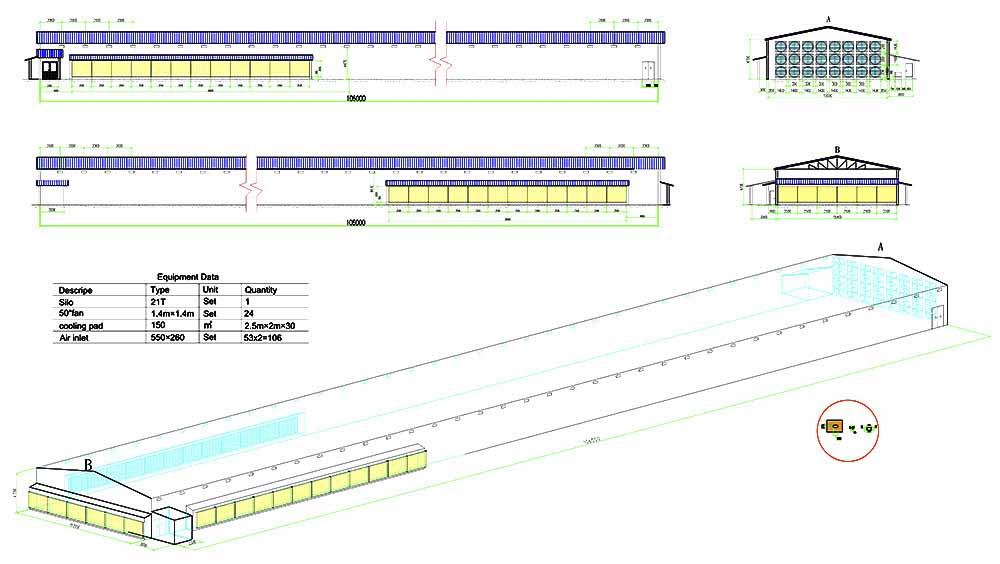Optimizing Hen Cages for 70,000 Birds in Tanzania: A Comprehensive Guide
Chicken farming is a thriving industry in Tanzania, with numerous farmers seeking to expand their operations. One of the critical considerations for farmers aiming to house up to 70,000 birds is the design and capacity of their hen cages. This article delves into the best practices and strategies for optimizing hen cages to accommodate such a large number of birds.
Understanding the Needs of 70,000 Birds
When managing a flock of 70,000 birds, it is essential to have a well-thought-out plan. This includes ensuring that each bird has adequate space, proper ventilation, and easy access to feed and water. Below are some key points to consider:
- Space Allocation: Each bird should have a minimum of 0.5 square meters of space.
- Airflow: Ventilation systems should be designed to ensure proper air exchange without exposing birds to extreme temperatures.
- Feed and Water Systems: Automated feeding and watering systems can significantly improve efficiency and reduce the risk of contamination.
Designing Hen Cages for Maximum Capacity
Designing hen cages for 70,000 birds requires a careful balance between capacity, bird welfare, and operational efficiency. Here are some design considerations:

- Cage Material: Choose materials that are durable, easy to clean, and resistant to corrosion. Stainless steel is a popular choice.
- Cage Structure: Ensure that the structure is robust enough to withstand the weight of the birds and equipment without sagging.
- Layering Systems: Implement multi-layered cages to optimize space and improve egg collection efficiency.
- Automatic Systems: Invest in automated systems for feeding, lighting, and waste management to reduce labor costs and improve hygiene.
Case Study: Successful Implementation in Tanzania
In Tanzania, a leading chicken farm successfully implemented a system that housed 70,000 birds. The key factors that contributed to their success were:

- Professional Consultation: They engaged with experts who provided tailored solutions for their specific needs.
- Regular Maintenance: The farm invested in regular maintenance to ensure the longevity of the equipment.
- Employee Training: The staff were trained on best practices for managing such a large flock.
Conclusion
Optimizing hen cages for 70,000 birds in Tanzania requires a combination of careful planning, quality materials, and efficient systems. By following the guidelines outlined in this articl e, farmers and investors can maximize their flock’s welfare and profitability.
e, farmers and investors can maximize their flock’s welfare and profitability.
Are you planning to expand your chicken farming operation in Tanzania? Leave a comment below, and our team at LIVI Machinery will be happy to provide you with a free chicken farming design plan and equipment quote.




